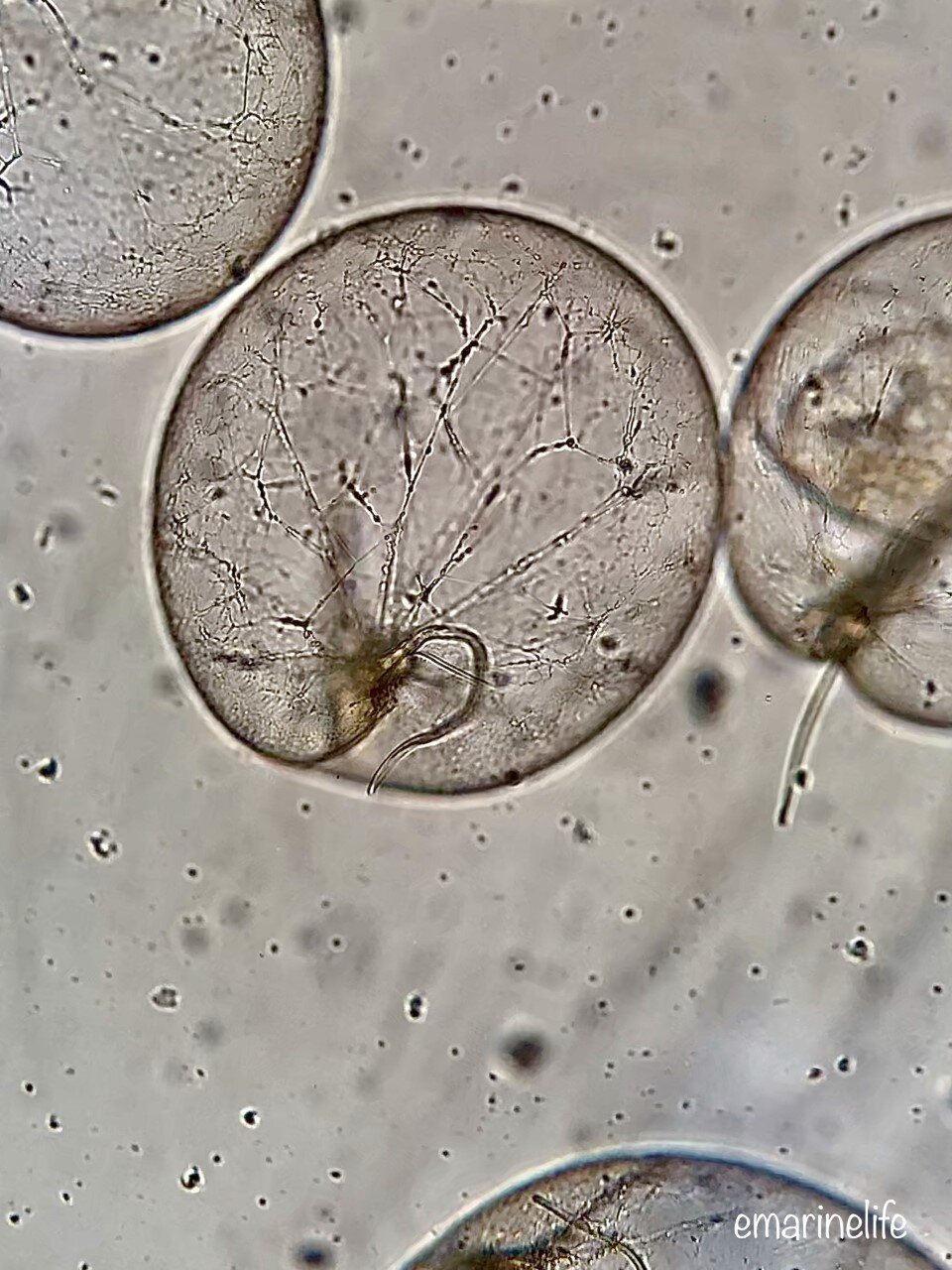Creature Feature - Noctiluca
Noctiluca are a type of animal plankton (zooplankton) called dinoflagellates. This type emits light when disturbed! Noctiluca under a microscope image by Emily Bjornsgard.
During this time of year, one of the favorite pastimes of holiday-lovers is to seek out the cheery, festive lights. With their twinkling, blinking, and dazzling displays, they are nothing short of magical. But did you know, the Salish Sea has its own set of lights? Presenting, Noctiluca scintillans, or noctiluca.
Noctiluca under microscope magnification. Can you spot their flagella? Photo by Emily Bjornsgard
Noctiluca is a small plankton, specifically a dinoflagellate (a single-celled animal plankton), that lives in many of the world’s waters. Dinoflagellates have two little whips that help them spin and move through the water. If you break apart the name, dino is Greek for whirling and flagellum means small whip. They are basically whirling whips! One flagellum makes it spin and the other propells it from behind.
This creature has an adaptation where if it gets disturbed by movement- such as a fish passing by, or a kayak paddle brushing through the water- it emits a bright light that varies from blue, white, and green to scare away potential predators. Just as soon as the light appears, it is quickly gone in the night. It creates this fleeting light through chemical reactions in its body, much like fireflies do. Imagine if you could create light like that! In Latin, noctiluca literally means “night light.” This glowing animal phenomenon is called bioluminescence.
Noctiluca glowing when tossed by crashing waves at Sea Beach, CA. Noctiluca live throughout our one world ocean. Creative commons photo by makelessnoise.
Bioluminescence in the seas used to be called “sea sparkle” or “burning of the sea” by sailors and coastal inhabitants, and for good reason. In mid-summer until early fall in the Salish Sea, sparkling noctiluca can be seen after dark when there is little to no light left in the sky. The perfect night to see them would be with little to no moonlight, no streetlamps or city lights, and having had a long, warm day with plenty of sunlight. These conditions cause large “blooms” of noctiluca. It is truly spectacular to see these enchanting creatures on a nighttime sea kayak tour, or even just on a stroll across some docks or a beach.
But, why do these creatures show up in the Salish Sea? Well, the waters in the Salish Sea have a lot of upwelling occurring, which is when currents bring water from lower sea depths up to the sea’s surface. The whole sea is constantly being churned around like a big mixing bowl! This upwelling brings up tons of nutrients to the water’s surface, and those nutrients are like fertilizer for plankton, including noctiluca. Salish Sea waters are incredibly nutrient-rich, and because of that and the abundance of plankton that feed on those nutrients, there is also a large variety of other organisms that call the Salish Sea home. Noctiluca is just one amazing organism that occurs, and it just happens to be bioluminescent. The San Juan Islands in the middle of the Salish Sea are a particularly excellent place to see bioluminescence (it is actually one of the top places in the world!), because there are so many bays and inlets that tuck away large amounts of noctiluca.
So next summer, find some noctiluca! Brush your hands through the water and see them sparkle; kick up some shoreline sand and watch it shatter the water with blue fireworks; watch barnacles and shrimp create little watery twinkles as they feed on the sides of docks; go kayaking and watch seals dart under you and leave ethereal trails of light. Or just jump right in and watch your whole body glow! Whatever you do, however you see them, do not miss out on this amazing natural wonder of living light.



